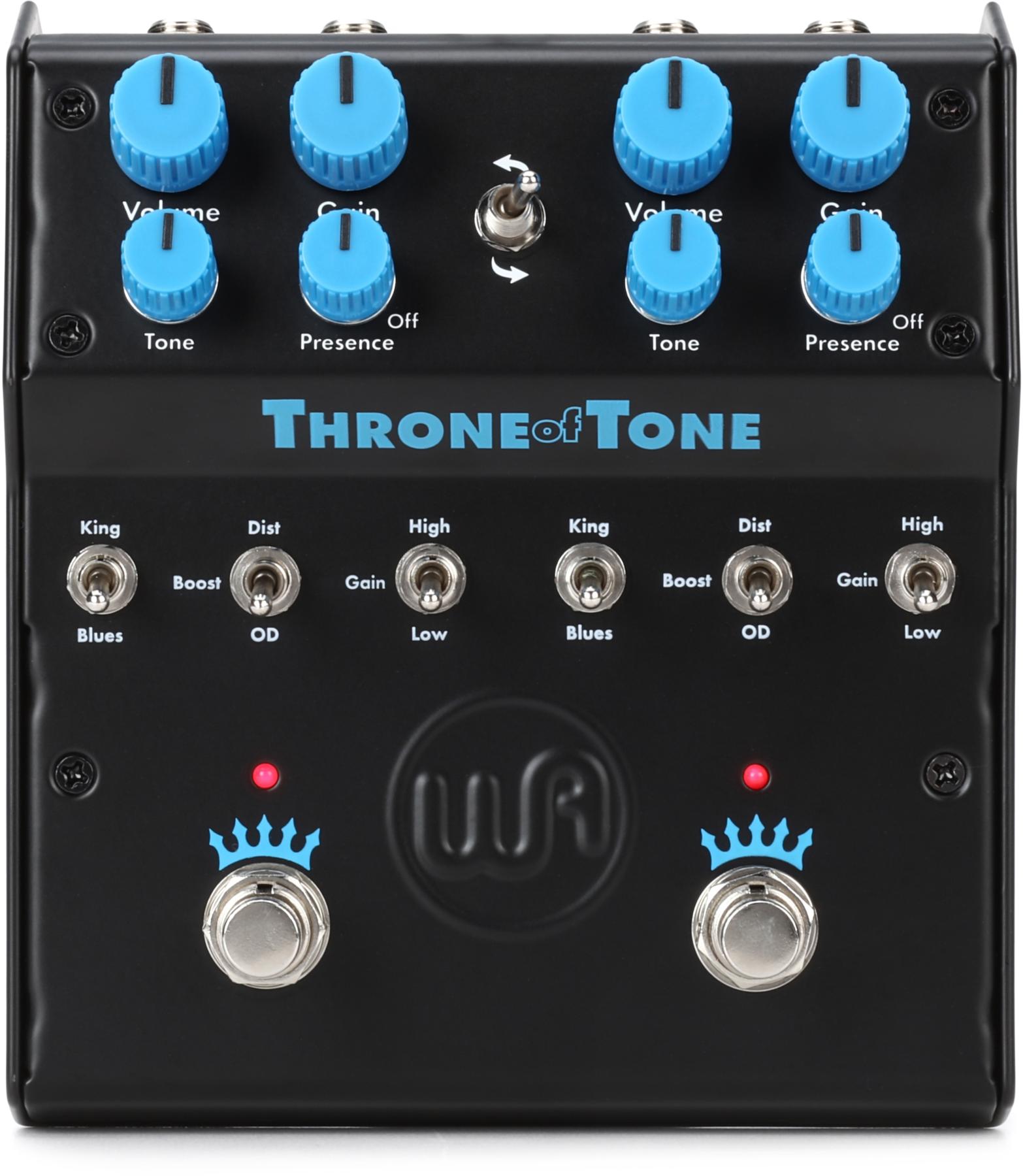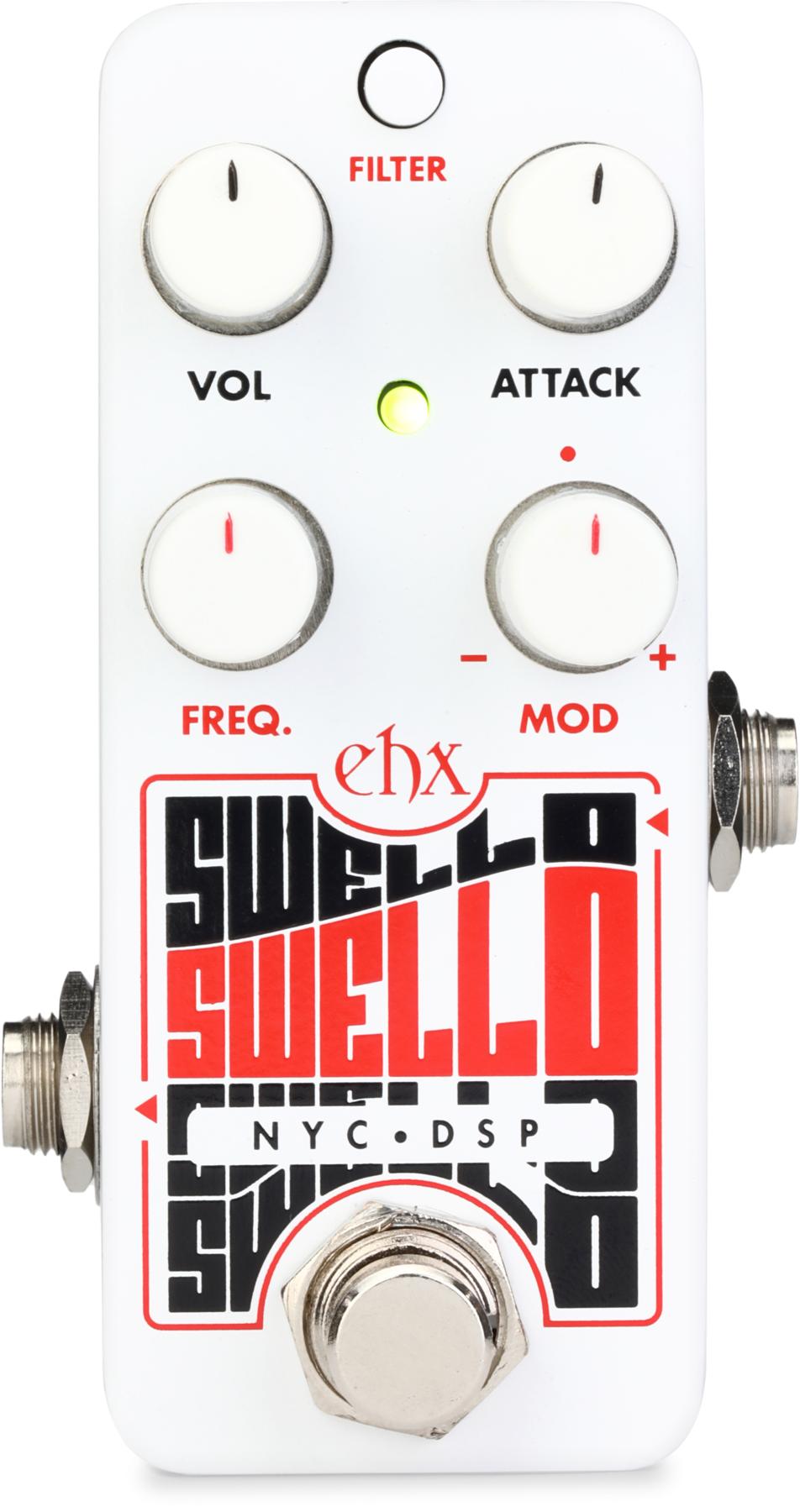RatingsPros:Bellowing, blendable, high-horsepower silicon and germanium fuzz tones. Effective filtering. First-class construction. Cons: Expensive. Street: $299 street (silver edition) Spaceman Effects Gemini IV spacemaneffects.com | Tones: Ease of Use: Build/Design: Value: |
When we reviewed Spaceman’s Gemini III back in 2012, we were knocked silly by how the blendable germanium and silicon fuzz circuits created so many unique, compound voices. The available variations in tone were distinct, numerous, and almost universally musical and useful. But as good as the Gemini III was, Spaceman’s new evolution of the circuit, the Gemini IV, is even more versatile.
The Gemini IV expands its tone palette primarily by providing independent filters for each of the parallel fuzz circuits. It also trades the 3-position gain switches that appeared on the Spaceman III for more nuanced and flexible gain knobs. The many possible colors that result make Gemini IV one of the most satisfying and flexible fuzzes you can buy at any price.
Space Specs
Like every Spaceman Pedal, the Gemini IV is an homage to ’50s and ’60s avionics design. But while Spaceman’s visual motifs are inarguably awesome looking, they also have the practical benefit of being functional, sturdy, and easy to read and navigate—just like a spacecraft’s instrument panel should be. The Gemini IV enclosure is bigger than the Gemini III’s, presumably to accommodate the extra filtering functions without crowding the enclosure’s interior. Even so, Spaceman had to get clever to fit all the required circuitry. The result, however, is a thing of beauty. (If you’re into the aesthetics of circuit boards, anyway.) The circuit is split into two tiered through-hole boards—each fastidiously hand-populated—and affixed securely to the chassis without being attached to the jacks or footswitches. The germanium fuzz circuit, which is the smaller of the two boards, is home to two NOS AC128 transistors, including one with a very cool patina, suggesting it must sound pretty special to have been included among so many otherwise gleamingly new parts. There’s even room for a battery, which is situated just below the footswitch.
Maximum Thrust
Even if Spaceman weren’t such an astronautically fixated company, rocket analogies would be apt for describing the Gemini IV’s sounds. Both the germanium and silicon voices are as throaty, bellowing, and hot as a Titan missile at full throttle. And while there may be louder fuzzes, I doubt few players will cry over a lack of horsepower.
The germanium side is quite massive-sounding for a Ge circuit, prompting comparisons to a high-octane Tone Bender MkII, in my imagination. But the Gemini IV’s germanium fuzz has more range at both the high- and low-gain ends of its spectrum than a Tone Bender would, and at half-gain settings, where a vintage germanium fuzz would crap out, the Spaceman offers punchy, concise, and rich fuzz colors reminiscent of a Jordan Boss Tone or Maestro FZ-1. On the silicon side, the fuzz hues are only slightly less complex, exhibiting some of the sizzle of a vintage silicon Fuzz Face and the muscle of a triangle or ram’s head Big Muff.
But it’s the mixing and matching of these tones that account for the real magic. It can help to think about the Gemini IV’s control array in terms of a Les Paul, Rickenbacker, or Fender Jaguar rhythm/lead circuit setup: All of them enable you to create, blend, and switch between wildly different tones (and in a Jaguar’s case, add filters) to create extra-dramatic contrasts. But the subtle shifts in coloration you can achieve with the Gemini IV’s blend, gain, and filter arrays are arguably more complex and certainly more numerous than the tone variations in a guitar.
Mixtures of both fuzzes at maximum gain and all-pass filter settings are predictably massive and complex, and I suspect many players will buy the Gemini IV for this sound alone. But for me, the most interesting sounds were based on contrasts, and while there are countless possible blends, all of which tend to sound rich, complex, and very different, my favorite tones involved 50/50 mixes of scathing, wide-open silicon sounds and hazier, half-gain, high-end filtered germanium tones. Recipes like this produce fat, multi-dimensional rhythm sounds and stinging lead tones with cool low-end ballast, which can be shaped in more specific ways with the filters or the phase switch.
The Verdict
The quality of construction and sounds in Spaceman pedals never fails to impress. But the range of fuzz color available in Gemini IV would be impressive by any builder’s standards. And as versatile as it is, it’s easy to imagine making the Gemini the only fuzz you ever use.





























